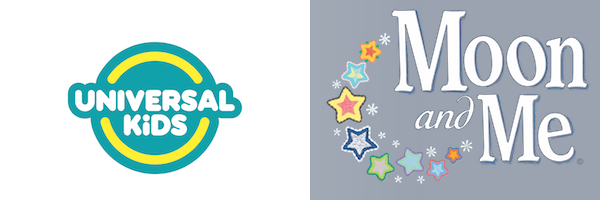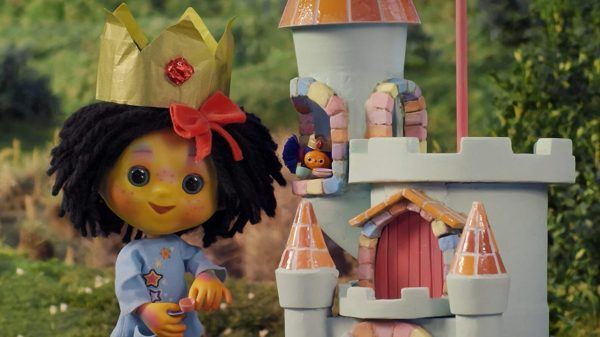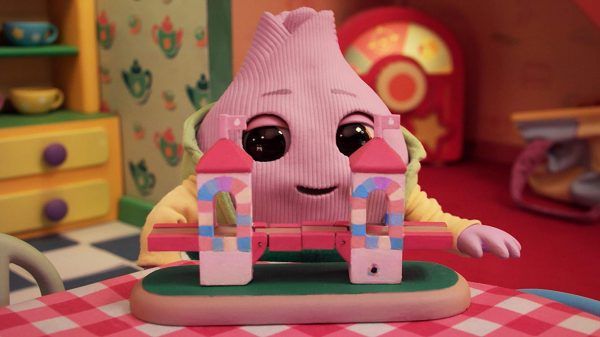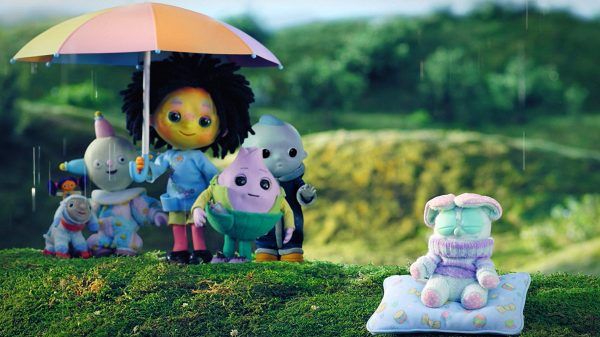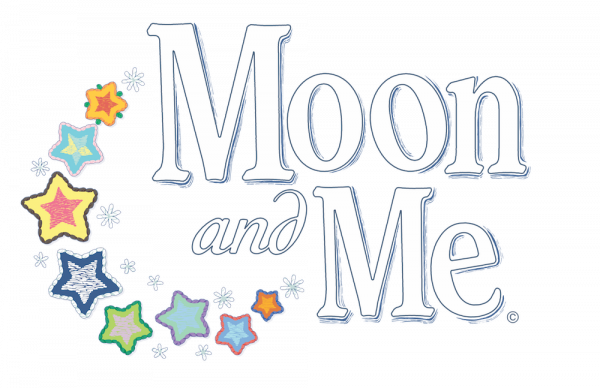Twenty years since the premiere of Teletubbies, creator Andrew Davenport is back with Moon and Me, a new family-friendly show about a magical toy, Pepi Nana, who lives in a toy house with a family of comical toy friends. Moon and Me explores what happens when toys come to life at night and breaks new ground in its technical and visual ambition, using sophisticated puppetry and stop motion animation. Moon and Me also features an original song by Michael Bublé and is narrated by Nina Sosanya (Killing Eve). The show has already premiered in the UK to much buzz and was rated number one overall on the CBeebies network during its first two weeks on air.
I had a chance to chat with Davenport before the premiere of Moon and Me on Universal Kids this coming Monday, May 20th at 8:00am. We talked about the show's road through production and the unique visual style it employs, how it's different from Teletubbies, and finding the right voice to narrate the story. It's like nothing you've ever seen before, but luckily we have a teaser video from the unique show to share with you, followed by the interview itself.
Take a look at our clip from the opening credits of Moon and Me below:
How long have you had the idea for Moon and Me? How did the idea come to you?
Andrew Davenport: I’ve been working on the idea for roughly five years. I became interested in ‘Toy House’ stories, and noticed that there didn’t seem to be a contemporary example. The toy house stories I was familiar with were written in the middle of the last century. However, they are all still in print, which suggests they still resonate with today’s children. So I thought - wouldn’t it be great to create a contemporary toy house story, built on the language and culture of contemporary toy house play? I set up a toy house play observation project with the University of Sheffield in the UK, to see how preschool children play with toy houses. That helped me understand more about what children find engaging and compelling about toy house play, and gave me the key play elements I needed to build out the series narrative.
For people who know your work from Teletubbies, how is Moon and Me different? What are some of its similarities?
Davenport: Both series emerge out of a focus on a particular time of preschool life, and in particular on the play of that period. The most obvious difference for me is the scale. Teletubbies was shot with actors in full-bodied costumes. Tinky Winky stood 8 foot 6 inches tall. Moon and Me is shot at toy house scale, so Pepi Nana stands about 6 inches. Both series strive to create a unique visual narrative, cognitive challenge and imaginative experience for the child, one that the child will recognize as being in the ‘language’ of their own culture.
Can you talk a little bit about finding the right visual style for Moon and Me?
Davenport: The visual style always emerges out of the story. I wanted Moon and Me feel as though you were looking into a real toy house with real toys that had magically come to life. So that was in a way an easy starting point. By rigorously shooting only with real objects and toys at a tiny toy-house scale, and embracing all of the challenges that go with that, in a way, a visual style evolves by itself. Puppetry was the obvious technique for the characters because it literally brings otherwise inanimate ‘toys' to life. Then in the case of Moon Baby, the character who is not a toy, but who comes from the moon, a different technique was needed to make him feel different. I landed on stop motion because the production process is the exact opposite of live action, but importantly it still works ‘in camera' with real objects. Moon Baby therefore literally comes from another production ‘world’. The demands of placing Moon Baby seamlessly into the world of his Toy House - the ‘conflict' between the two techniques - again forges another aspect of the visual identity. Then it was a matter of making everything as detailed, beautiful and harmonious as possible. A huge amount of resource and a number of extraordinarily talented people worked on that, there are over 500 handmade objects in the toy house alone. We spent a huge amount of time on the intricate color palette, developed with artist Sophie Herxheimer. I want the series to look not just unique, but striking, I hope, beautiful.
What have advances in puppetry and stop-motion animation allowed you to do in this series that you couldn’t have done 20 or even 10 years ago?
Davenport: I think it would have been hard to have created such expressive puppets at such a tiny scale. That relies on the latest animatronic and engineering design and build, much of it developed specifically for the project by our extraordinary puppet team, lead by Gabriel Temme.
When did you know that Nina Sosanya was the right person to narrate the series?
Davenport: Very quickly! Nina is an incredibly talented storyteller, and instinctively brings a perfectly balanced lightness of touch, warmth and humor to the series. She not only tells the stories but voices all of the characters and sings all of the songs. Her voice somehow seems to integrate perfectly within the story world. I was aware that Toy House stories can have a slightly old-fashioned feel - but Nina brings a perfect contemporary feel and atmosphere to Moon and Me.
Look for Moon and Me on Universal Kids Monday, May 20th at 8:00am.

